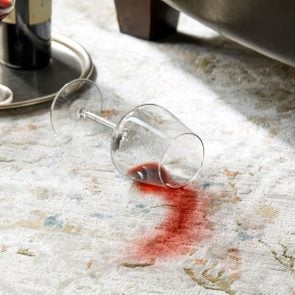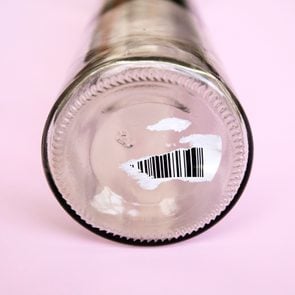How to Get Oil Stains Out of Clothes Without Ruining Them
Updated: Apr. 18, 2024
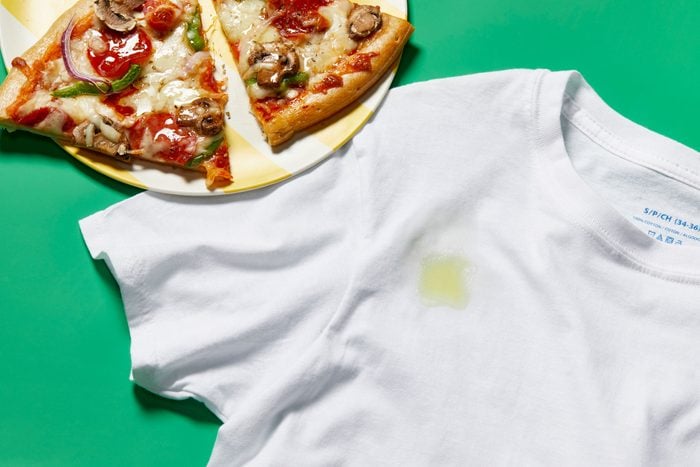
Dropped pizza on your lap? All is not lost—especially if you act fast. Follow these steps to remove even the most stubborn oil stains.
I am an oil-stain magnet. Just last week, I was out to lunch with a friend and dropped a lettuce leaf doused in balsamic dressing right on my pants. This happens to me all the time, but I never panic—and neither will you if you know how to get oil stains out of clothes the right way. The wrong methods, however, could potentially set that oil stain into the fibers of your clothes and make it impossible to get out.
I’m well-versed in removing grease and oil stains not just because I’m prone to getting them on my clothes but because I’ve had my own cleaning company since 2006. Over the past 17-plus years, I’ve amassed a ton of knowledge from scientists, product manufacturers and appliance experts, and I share cleaning and laundry advice like this on my YouTube channel, Clean My Space. That said, there’s always room for a consult! So I corroborated my knowledge with my friend and fellow laundry expert Zach Pozniak, a fourth-generation dry cleaner and a trusted voice on TikTok, and asked him to provide some extra insights and tips.
Trust me when I say you’ll want to bookmark this article and refer to it the next time you drop something in your lap, get splashed while cooking, accidentally rub your leg against a bike gear or have a DIY project go awry. These stain-removal techniques just might save your clothing!
Get Reader’s Digest’s Read Up newsletter for more cleaning, tech, travel, humor and fun facts all week long.
About the experts
Reviewed for accuracy by: Mary Marlowe Leverette, a highly regarded fabric-care, stain-removal and housekeeping expert with more than 40 years of experience. |
A few tips before you get started
- Act quickly. This is arguably the most important rule for removing oil stains. Once the stain dries, there’s a good chance it will be set into the fabric. If that happens, it doesn’t mean you won’t be able to get it out, but your chances of success will decrease. (Don’t worry—we have some suggestions to try on old oil stains below.)
- Perform a spot test on delicate fabrics. Some fabrics, such as wool, cashmere, lace and silk, are inherently delicate, and certain stain removers can damage them. So before trying those on a delicate item, perform a spot test in an inconspicuous area first.
- Don’t attempt to remove a stain from a “dry clean only” garment yourself. As noted above, some products can ruin certain fabrics, but dry cleaners will have access to the right products and equipment to remove the stain safely. Trust me: Leave this one to the pros!
- Use hot water on oil stains. Oil stains are more likely to dissolve in hot water, so always wash oil- or grease-stained clothes in the warmest water recommended for the fabric. (FYI, the opposite is true of removing blood stains from clothes, since hot or warm water can set protein-based stains.)
With that in mind, here are the tried-and-true methods for removing grease or oil stains that I use on my own clothes all the time.
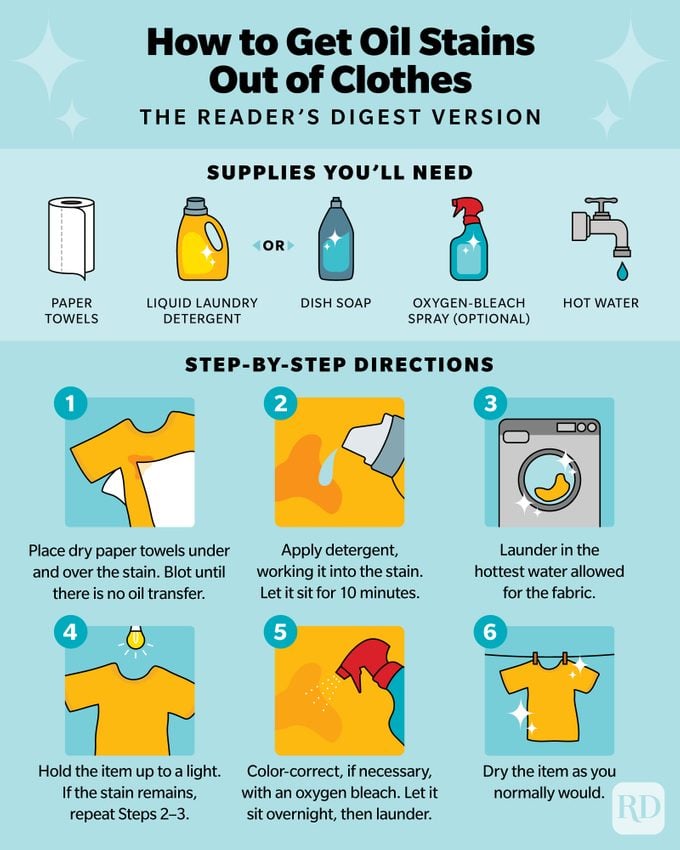
How to get fresh oil stains out of clothes
The hero products for removing fresh oil stains that you already have in your home? Laundry detergent and dish soap. “Surfactants are helpful with oil stains because they get along with both water and oil, forming a bridge between the two,” Pozniak explains. “But when used alone, water and surfactants will not remove an oil stain—they need to be used together.” The surfactant lifts the oil or grease to the surface and envelops it, and then the water washes it away.
Supplies you’ll need
- Paper towels
- Liquid laundry detergent or dish soap
- Oxygen-bleach spray or powder (optional)
- Hot water
Step 1: Blot the stain
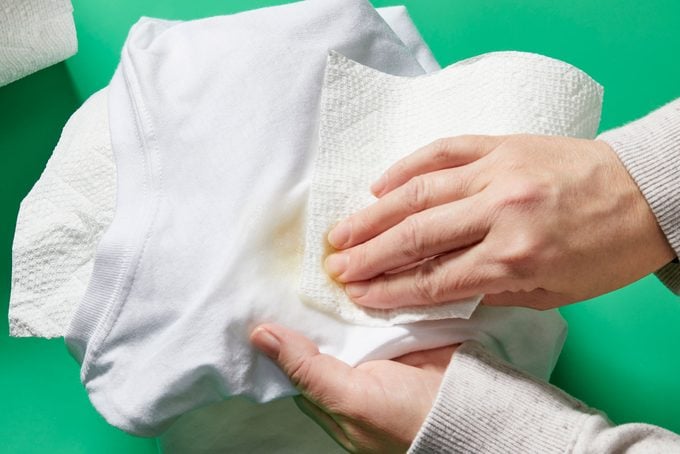
Place a dry paper towel under the stain to avoid spreading the oil. Then, with another dry paper towel, blot the stain by pressing it firmly. Lift the paper towel, find a fresh section, and repeat until oil no longer transfers to the paper towel. This reduces the amount of work the surfactant needs to do, so don’t skip this step!
Step 2: Apply liquid laundry detergent or dish soap to the stain
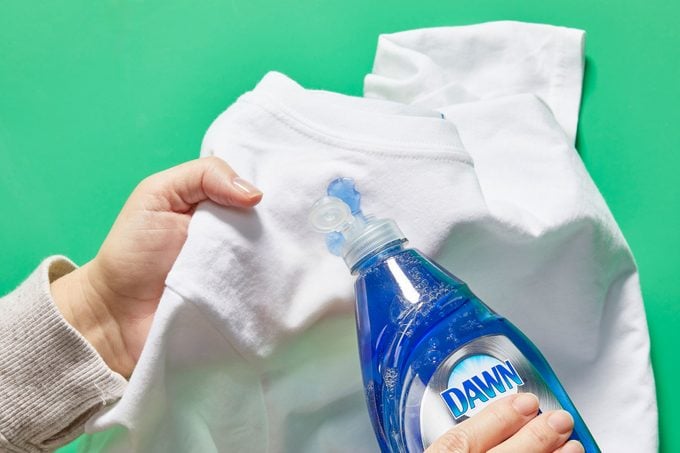
Apply just enough laundry detergent or dish soap to the stain to cover it, gently work it into the fabric with your fingers, and then allow it to sit for 10 minutes. And no, more isn’t better when it comes to the amount of detergent or soap to use. Too much can cause over-sudsing in high-efficiency washing machines, leading them to run extra rinse cycles and waste water. A high-quality surfactant will lift grease from the surface swiftly. I recommend Tide Free & Gentle Hygienic Clean laundry detergent or Dawn dish soap—they’re incredibly effective.
This should do the trick if you plan to launder your garment immediately. If not, rinse the affected area with hot water and repeat this step, as needed, to try to remove the stain manually.
Step 3: Launder the garment
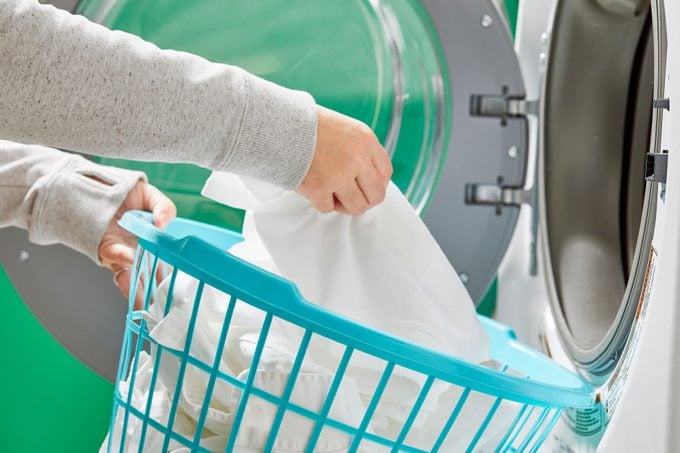
Place the pre-treated garment in the washing machine, and wash it in the hottest water permitted for the fabric. (Check your item’s care label for guidance.) Hot water ages clothing quicker, so I tend to stay away from it unless necessary—but this is when it would be necessary, because your item will be ruined if you don’t get that oil stain out! That said, to minimize your clothing’s exposure to hot water, use the washing machine’s quick cycle, which is only about 15 minutes long.
Step 4: Assess the stain
Take the item out of the washing machine, and check to see if the stain has been removed. A trick I’ve learned to assess a stain best is to hold your garment up to a light source and try to locate the area where the stain was. Try to look “through” the fabric in that spot. If you can’t see any darkened spots where the oil was, you’ve been successful and can move on to Step 6. Otherwise, repeat Steps 2–3 and possibly do Step 5 until you can’t see any outline, dark spot or ring from the stain.
Step 5: Color-correct, if necessary
This step is only necessary if you’ve taken your garment out of the wash, it’s still wet and the oil stain is gone … but now you have some residual color left behind. This might happen with something like a tomato-sauce stain. In this case, you’ll want to apply oxygen bleach that’s safe for colored clothing but can “reverse” the discoloration from the stain.
You have two options here: Either spray a ready-to-use product like OxiClean Laundry Stain Remover Spray on the stain, or soak the garment in a bucket filled with hot water and a scoop of OxiClean Versatile Stain Remover powder, and let it soak overnight. Launder, check and repeat. Hang to dry until you’re confident the stain is gone, and then you can use your machine to dry. Pozniak sometimes soaks a garment three or four times in a bucket of hot water and a scoop of oxygen bleach powder overnight before a stubborn stain is finally gone—but he’s confident that you can eventually remove the stain this way.
Step 6: Dry the item
When you’re certain the stain is gone, dry the item as you normally would. If that’s in a dryer, make doubly sure that the stain is gone, since the heat from the dryer can set the stain.
How to get old oil stains out of clothes
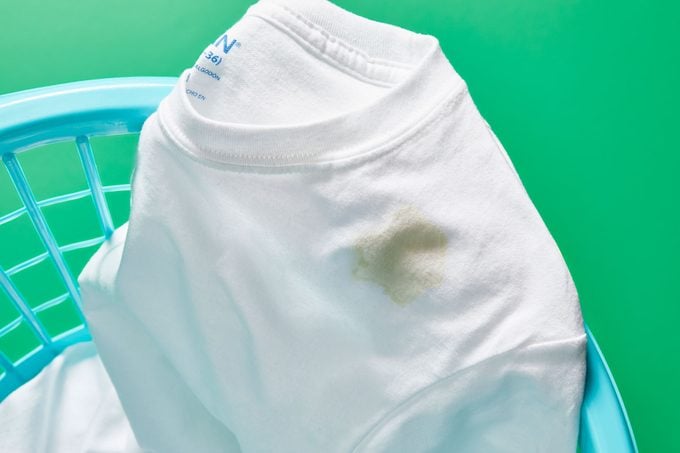
If you notice an old oil or grease stain on your clothing, you can attempt to remove it using the steps below. But I do want to caution that, despite your best efforts, it may be set in for good. After a wash-and-dry cycle with an unsuccessful removal effort, it can be anyone’s guess as to whether or not the stain-removal operation will succeed. That said, there is a technique you can try, along with a last-ditch effort that Pozniak uses, and both are pretty simple to do.
Supplies you’ll need
- Baking soda
- Dish soap
- Small container
- Water
Step 1: Make a baking-soda paste
Mix equal parts baking soda and dish soap in a small container. You’ll need enough of the mixture to cover the entire stain, and the mixture should be applied with the thickness of a smear of cream cheese on a bagel. For one or two stains, a tablespoon of each is perfect. Pro tip: Don’t save leftovers for future use; the baking soda will dry up and get crusty.
Step 2: Apply the paste to the stain
Scoop up the paste, and gently work it into the stain with your fingers. Allow it to sit overnight until it dries. The paste should be completely crusty and dry before you move on to the next step. The thinking here is that the dish soap will help to draw out the old oil or grease, and the baking soda will trap it on the surface when dry.
Step 3: Launder the garment
Using regular detergent, wash the garment on the hottest water allowable for the item. (Remember to check the garment’s care label, just as you would for fresh stains.)
Step 4: Inspect the stain
Hold the garment up to a bright light source, and stare through the fabric where the stain was. Do you notice an outline of the stain or a darkened spot, or is nothing there? If you’ve succeeded, the stain will be gone, and you can move ahead to Step 6. If not, you’ll see remnants of the stain, and you should proceed to Step 5.
Step 5: Try a last-ditch attempt
If nothing seems to be working on your old oil stain, Pozniak suggests trying this next:
- Make a solution of 1 cup warm water and 1 teaspoon dish soap or liquid laundry detergent.
- Work that in, and let it sit for at least an hour (and up to overnight) before rewashing. He says that with old oil and grease stains, the longer a stain treatment can sit, the better it will perform.
- Once you’ve waited the appropriate amount of time, rewash with the method outlined in Step 3, then proceed to drying.
If you’ve done all you can and the old oil stain still isn’t budging, your garment may be a lost cause. I recently had to bid farewell to my favorite black hoodie for this reason. Hey, I tried!
Step 6: Dry the garment
If your garment is able to be dried in a machine, place the garment in the dryer, and use the settings most appropriate for it. Otherwise, you can hang it to dry.
FAQs
Why is oil so hard to remove from clothes?
Oil stains are hard to remove from clothing because they’re different than other stains on a chemical level. “Most food and drink stains are water-based—think: berries, tomato sauce, grass, wine, etc.—but oil is not,” Pozniak says. “As a result, water has a very hard time removing oil stains because they do not mix.” And since clothing doesn’t provide a slick surface like ceramic or metal, oil and grease nestle into fibers and become practically water-repellent.
Is hot or cold water better for removing oil stains?
Water temperature matters when it comes to laundry, and hot water is best for removing an oil or grease stain. That’s because the hot water helps to break down the slick substance instead of “hardening” it. To better understand this, think about butter in a hot pan vs. refrigerated butter. The heat helps to melt the oil or grease and move it along. When caught quickly, the stain should come out with an appropriate surfactant and a wash in hot water.
Can you remove oil stains from clothing you’ve washed and dried?
Technically, yes … but you won’t always be successful. And it’s really a guessing game. Following the steps above will be your best bet. Pozniak seconded my advice earlier to always inspect a stain prior to putting it in the dryer, since drying heat will only make an oil stain harder to remove!
Can you remove an oil stain using baking soda, cornstarch or baby powder?
This is a popular recommendation online, but these powders alone will not remove an oil stain. Cornstarch and baby powder are absorbent, and when sprinkled onto an oil stain and left for a few hours, the powder will darken and thicken as it absorbs oil. Then, the stain would need to be treated with a surfactant, as outlined in the first section, where I discuss removing a fresh oil stain. Rather than this method, I prefer the quicker way: blotting the stain repeatedly with a paper towel to suck up as much oil as possible. Baking soda’s primary jobs are to whiten, deodorize and provide mild abrasion, and the bottom line is that an oil stain will stay put without a surfactant.
Why trust us
At Reader’s Digest, we’re committed to producing high-quality content by writers with expertise and experience in their field in consultation with relevant, qualified experts. For this piece, Melissa Maker, the cleaning expert behind the popular website and YouTube channel Clean My Space and the founder of a Toronto-based cleaning company, tapped her experience as a cleaning expert, and then fabric-care expert Mary Marlowe Leverette, who has more than 40 years of experience in laundry and stain removal, gave it a rigorous review to ensure that all information is accurate and offers the best possible advice to readers. We also relied on reputable primary sources, including government and professional organizations and academic institutions, as well as our writers’ personal experience. We verified all facts and data and backed them with credible sourcing, and we will revisit them over time to ensure they remain accurate and up to date. Read more about our team, our contributors and our editorial policies.
Source:
- Zach Pozniak, @Jeeves_NY, fourth-generation dry cleaner and co-owner of Jeeves in New York; text interview, Jan. 11, 2024


